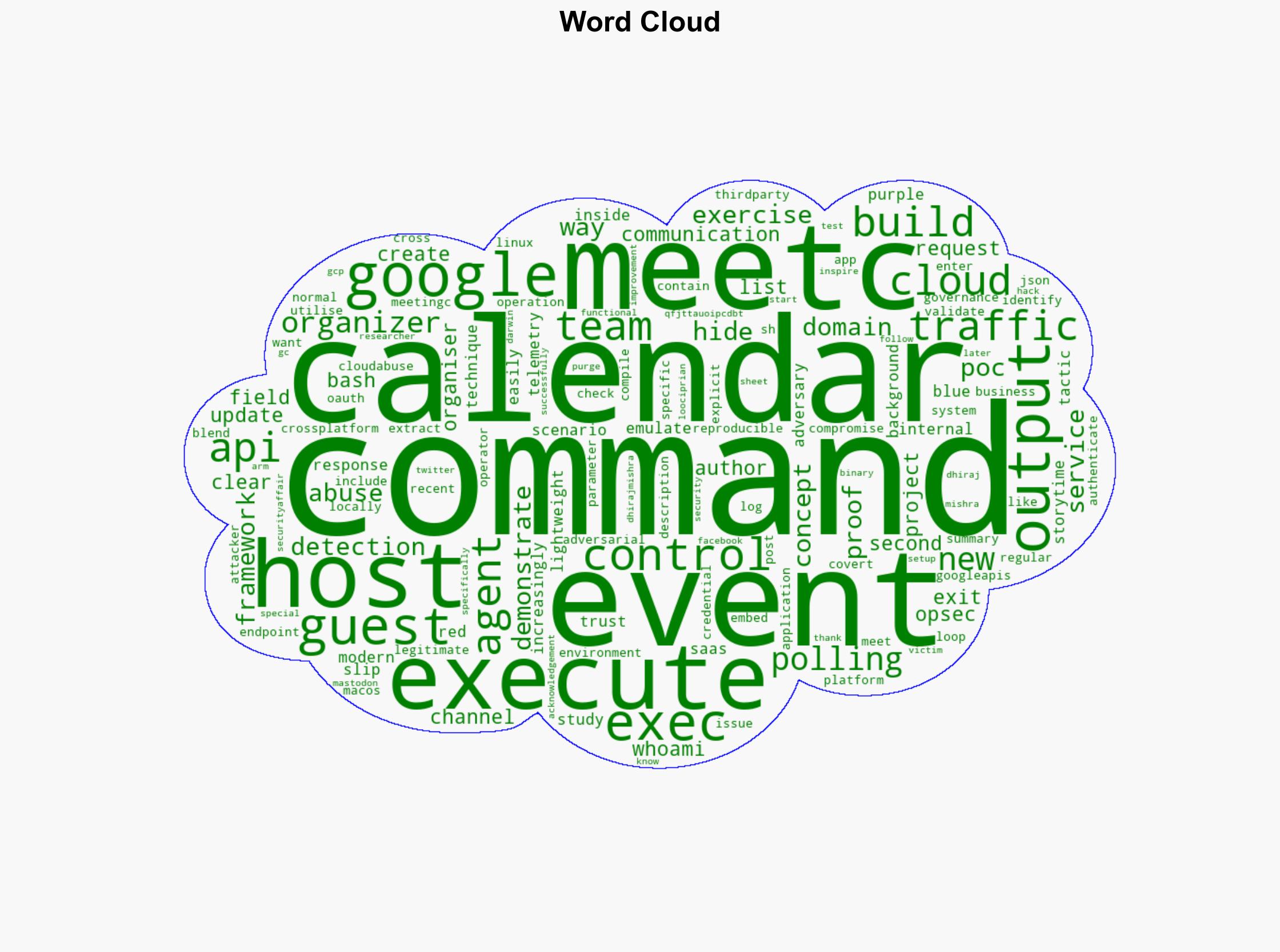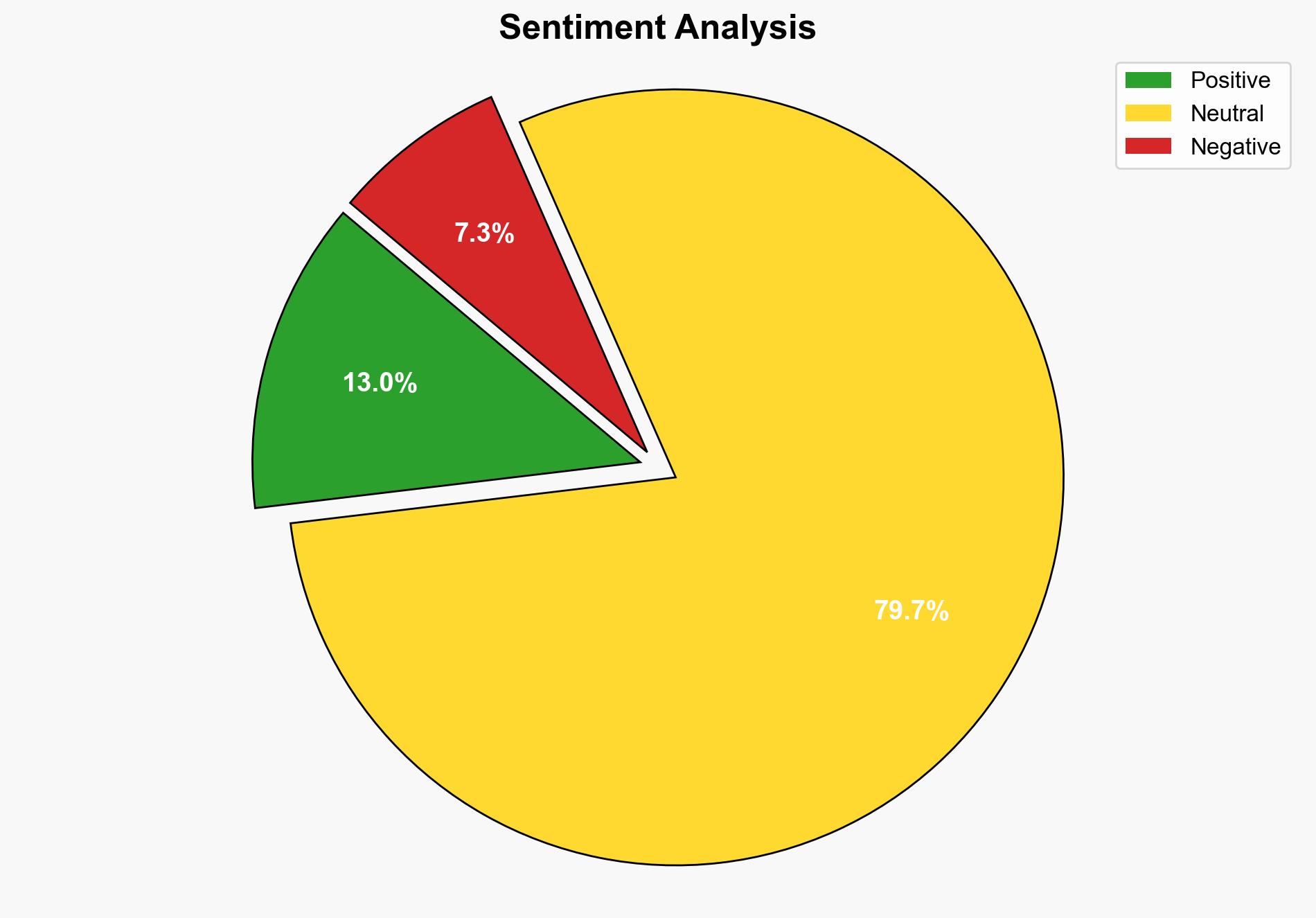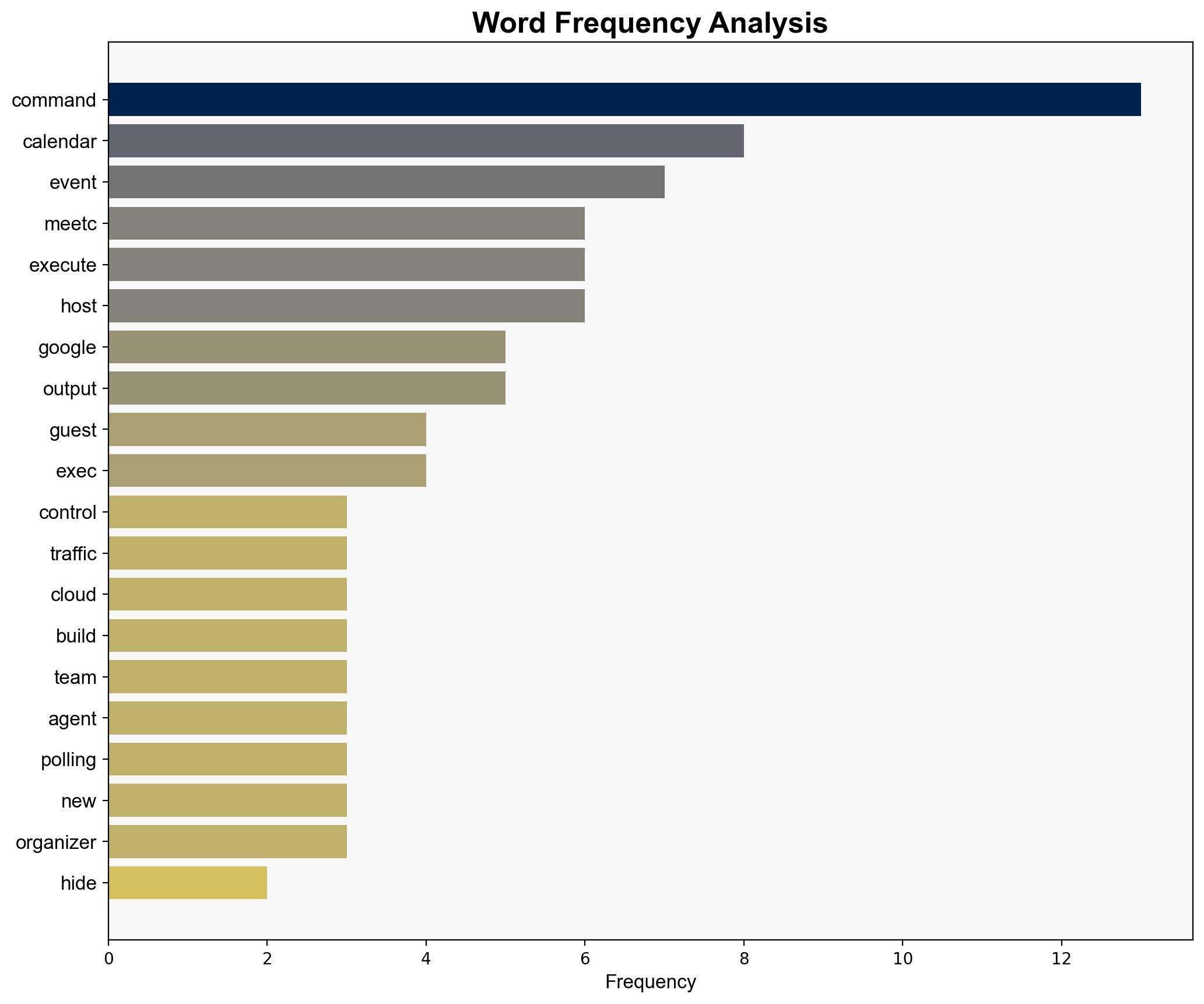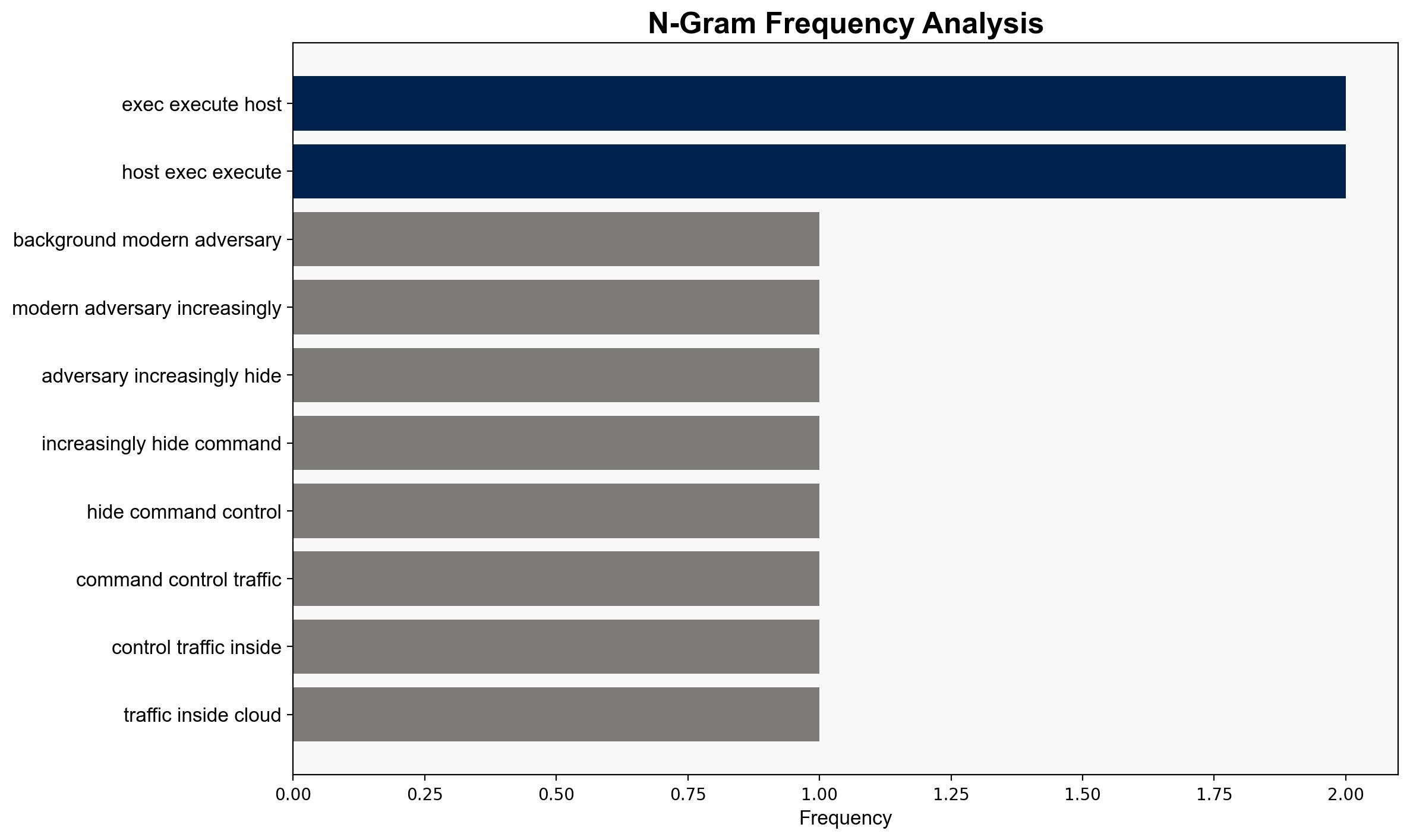MeetC2 A serverless C2 framework that leverages Google Calendar APIs as a communication channel – Securityaffairs.com
Published on: 2025-09-06
Intelligence Report: MeetC2 A serverless C2 framework that leverages Google Calendar APIs as a communication channel – Securityaffairs.com
1. BLUF (Bottom Line Up Front)
The MeetC2 framework demonstrates a novel method for adversaries to exploit legitimate cloud services, specifically Google Calendar APIs, for covert command and control (C2) operations. The most supported hypothesis is that this technique is primarily a proof of concept (PoC) aimed at demonstrating potential vulnerabilities in cloud services, rather than an immediate operational threat. Confidence level: Moderate. Recommended action: Enhance monitoring and detection capabilities for anomalous activities within cloud services.
2. Competing Hypotheses
Hypothesis 1: MeetC2 is a PoC designed to highlight vulnerabilities in cloud services, intended for educational and defensive purposes.
Hypothesis 2: MeetC2 is an operational tool actively used by adversaries to conduct covert C2 operations, posing an immediate threat.
Using the Analysis of Competing Hypotheses (ACH) 2.0, Hypothesis 1 is better supported by the evidence. The source text emphasizes the PoC nature and the context of red and blue team exercises, suggesting a focus on demonstrating and testing detection capabilities rather than immediate malicious use.
3. Key Assumptions and Red Flags
– Assumption: The framework is primarily a PoC and not yet widely adopted by threat actors.
– Red Flag: Lack of detailed evidence on current exploitation by adversaries.
– Blind Spot: Potential for rapid adaptation and deployment by malicious actors if the technique proves effective.
4. Implications and Strategic Risks
The use of legitimate cloud services for C2 operations could complicate detection and attribution efforts, increasing the risk of undetected breaches. This technique could inspire similar methods across other cloud platforms, escalating the threat landscape. Geopolitical tensions could rise if state actors adopt such techniques for cyber espionage.
5. Recommendations and Outlook
- Enhance cloud service monitoring and anomaly detection systems to identify unusual API usage patterns.
- Collaborate with cloud service providers to develop and implement security measures against such exploitation.
- Scenario Projections:
- Best Case: The PoC leads to improved security measures and awareness, reducing potential exploitation.
- Worst Case: Rapid adoption by threat actors leads to widespread undetected breaches.
- Most Likely: Increased awareness results in gradual improvements in cloud security, but some exploitation occurs before full mitigation.
6. Key Individuals and Entities
– Dhiraj Mishra (Security researcher and author of the PoC)
– Loociprian (Contributor acknowledged in the PoC)
7. Thematic Tags
national security threats, cybersecurity, counter-terrorism, regional focus





